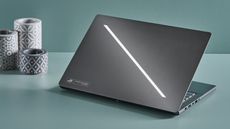Huawei has just taken to the stage at IFA 2018 to introduce the Kirin 980, the system on a chip (SoC) that it says will bring about the next evolution of mobile AI. It's the world’s first commercial 7nm SoC and that's a big deal if you care about speed and battery life. And who doesn't care about those two things?
- Top five 5G phones to expect in 2019: Galaxy S10, OnePlus 7, Huawei P30 and more
- Confirmed: 5G Huawei P30 or Mate smartphones coming in 2019
When compared with its predecessor – the Kirin 970 – the Kirin 980 chip delivers a 20% improvement in chip performance and 40% improved power efficiency. This means a faster phone with better battery life, but also quicker app launch times, better multi-tasking and a generally smoother user experience.
Speaking at an exclusive press event ahead of the IFA keynote, where T3 was in attendance, Benjamin Wang, Deputy General Manager, Huawei, called this achievement "the biggest engineering challenge we have ever met,” with a development process that took 36 months.
So how does the new Kirin stack up against Qualcomm's Snapdragon 845 chip, which powers the Samsung Galaxy S9 and the Samsung Note 9? It crushes it, basically. In tests, the Kirin 980 delivered 22% better performance and 32% less power consumption than the Snapdragon 845. It's worth noting, however, that the Galaxy S10 and Note 10 will come with updated Snapdragon processors next year, so this chip war is not ending any time soon.
Huawei Consumer Business Group CEO Richard Yu summed up the Kirin 980 as "the ultimate engine to power next-generation productivity and entertainment applications."
The first Kirin 980-powered Mate Series device – the Huawei Mate 20 – is scheduled to arrive in October. We'll be at the London launch and we can't wait to get our hands on one.
At IFA 2018, Huawei also announced the launch of two new gradient variants for the Huwei P20 Series: Morpho Aurora and Pearl White , expanding its range of gradient colors to four. That's probably of more interest to many people than the introduction of a supercharged new chip, but then that shows what they know.



